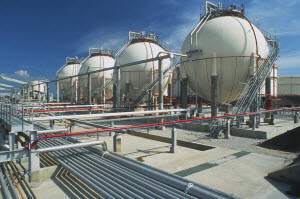EIGA Recommendations for Oxygen Hazard Analysis in Your Plant Operations
In plant operations, electronic gases present dangers with their use. The European Industrial Gases Association (EIGA) has created a safety publication to assist both the packager and the user of these gases. CPV Manufacturing adheres to these safety precautions and expects all customers to do the same while utilizing gases in their plant operations.
Understanding best practices will enhance safety in the workplace during the preparation of these gases and mixtures, transportation from production site, and storage and use. While this document is meant to give an overview, provide awareness, and give instruction, it doesn’t take the place of work instructions or operating procedures.
 The Asia Industrial Gases Association (AIGA), the Compressed Gas Association (CGA), the Japan Industrial and Medical Gases Association (JIMGA), and the EIGA jointly prepared this document.
The Asia Industrial Gases Association (AIGA), the Compressed Gas Association (CGA), the Japan Industrial and Medical Gases Association (JIMGA), and the EIGA jointly prepared this document.
Key Takeaways
This document contains information related to the following:
- National standards: Guidelines and regulations set by authorities of the country with respect to their design, construction, testing, and use.
- Physical hazards: Two primary physical hazards are gas pressure and extreme cold.
- Gas pressure:A higher state of energy than unconfined gases.
- Chemical hazards: Including flammability, oxidizing potential, corrosivity, and reactivity.
- Flammability: Requires two additional conditions to burn: an ignition source and an oxidizer.
- Main health hazards: Including acute toxicity, mutagenicity, carcinogenicity and reproductive toxicity, specific target organ/systemic toxicity, and asphyxiation.
- Environmental hazards: When contained properly, gases don’t pose significant human threat. But when certain gases are released into the environment, they can contaminate air or water with damaging results.
- Gas packaging: Information including construction, containing, valve construction, and filling ratio.
- Container construction and certification:Materials are predominantly carbon steel and aluminum alloy. Containers will be certified and tested regularly.
- Container weight: Containers must adhere to a certain weight to avoid a handling hazard.
- Valve construction: Specially designed for use on a pressurized container.
CPV Prioritizes Safety
CPV Manufacturing serves the shipbuilding, petrochemical, and industrial gas industries. Valves and fittings must be high quality and perform efficiently and accurately because a faulty product could result in disastrous damage. Customers in these industries rely on CPV for their non-failing valves and fittings to reduce risks and keep their plants operatively safely.
Because CPV always puts safety first, customers can be confident when using their products.
The US Navy counts on CPV to equip their vessels with valves and fittings that meet government standards. CPV Manufacturing’s Quality Management System is certified in the areas of design, material, fabrication, and testing and has been approved to meet the requirement of MIL-I-45208, SUBSAFE Level 1, EB 2678.
CPV designs and manufactures products that exceed industry and customer specifications, making them the obvious choice when it comes to selecting valves and fittings. CPV’s valves were designed in the 1950s and have since proved to be the most interchangeable and durable products in the industry today. Click here to learn more about CPV products.

